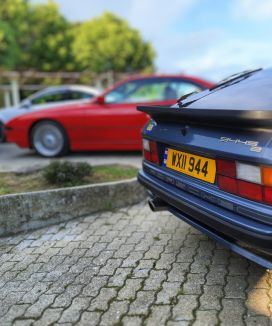Is the Mazda RX-7 a Classic?
Table of Contents
The mere mention of this Japanese sports car icon can stir up passionate debates among gearheads. With its curvaceous lines and the distinctive hum of its rotary engine, the RX-7 holds a special place in the hearts of many enthusiasts.
But does it have what it takes to be considered a classic?
Picture this: A twisty mountain road, the sun dipping below the horizon, and a sleek sports car dancing gracefully through the bends. The Mazda RX-7’s elegance in motion, a true testament to the harmony between man and machine, leaves onlookers in awe.
Enter the enigmatic Wankel rotary engine, an ingenious piece of engineering that defied convention. Critics said it wouldn’t last, but the RX-7’s tenacious spirit and a cult following beg to differ.
Is its underdog story enough to secure its place as a classic?
In this article, we’ll delve deep into the world of the Mazda RX-7. We’ll explore its unique traits, the impact it had on the automotive industry, and what it’s like to own one today.
As we weigh the factors that contribute to the RX-7’s classic status, we’ll examine the role of time and the ongoing debate surrounding this captivating rotary-powered machine.
So, buckle up and join us as we embark on a journey through the fascinating world of the Mazda RX-7 – a car that continues to enchant and inspire, long after the last one rolled off the assembly line.
The RX-7: A Rotary Revolution
The Wankel Rotary Engine
At the heart of the Mazda RX-7 lies the Wankel rotary engine – an obscure powerplant that dared to challenge the norm.
Instead of relying on the traditional piston-driven internal combustion engine, Mazda engineers turned to German engineer Felix Wankel’s creation for an unconventional approach to automotive propulsion.
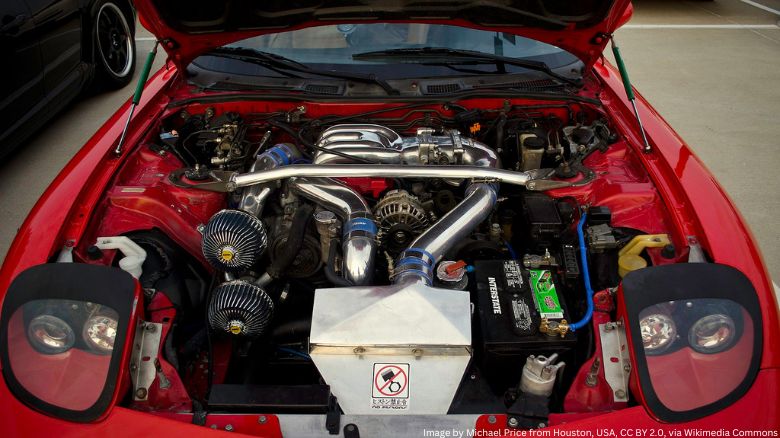
With its spinning rotors and compact design, the Wankel engine boasts a simplicity that sets it apart from its piston-driven counterparts.
This innovative engine contributes to the RX-7’s lightweight nature and near-perfect weight distribution, creating a harmony between power and agility.
The rotary engine’s unique character not only set the stage for the RX-7’s performance prowess but also played a crucial role in the car’s identity. The unmistakable sound of the rotary engine – a high-pitched whir that morphs into a ferocious howl as the revs climb – is music to the ears of automotive enthusiasts.
It’s a symphony that speaks to the very essence of the Mazda RX-7, and one that continues to captivate the hearts and minds of those who encounter it.
In a world dominated by conventional thinking, the Wankel rotary engine serves as a testament to Mazda’s daring spirit and relentless pursuit of innovation.
Performance and Handling: Elegance in Motion
The Mazda RX-7 is a masterclass in performance and handling. Thanks to its lightweight Wankel rotary engine and carefully balanced chassis, the RX-7 delivers an unforgettable driving experience.
The car’s nimble nature allows it to tackle corners with poise and precision, turning each bend into a graceful dance between the driver and the road.
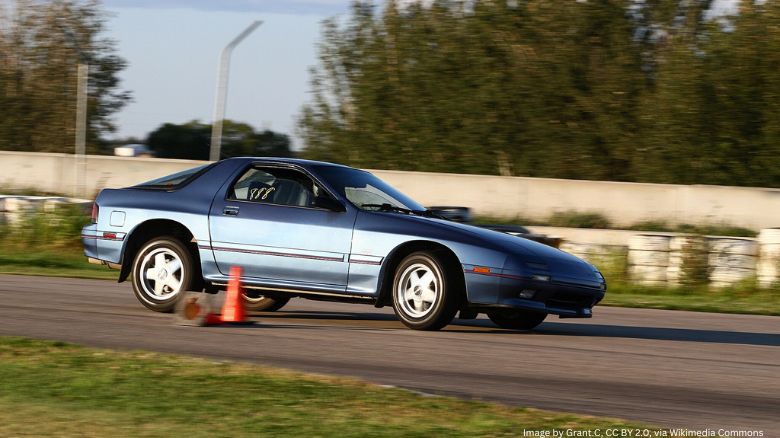
The RX-7’s performance credentials were no accident. Mazda’s engineers tirelessly pursued the perfect blend of power, balance, and responsiveness to create a machine that could hold its own against more powerful and expensive sports cars.
This dedication to performance excellence is evident throughout the RX-7’s three generations, each refining and building upon the successes of its predecessors.
Elegance in motion is more than just a catchy phrase when describing the RX-7; it captures the very essence of the car’s character.
The RX-7’s ability to glide effortlessly through tight turns and accelerate with exhilarating force showcases the harmony between the car’s design and engineering.
In a world of increasingly digital and disconnected driving experiences, the RX-7 stands as a beacon of analog automotive pleasure.
Its engaging performance and handling characteristics serve as a reminder of what it means to be truly connected to the road, making it a timeless example of elegance in motion.
The RX-7’s Role in the Rise of Japanese Sports Cars
The Mazda RX-7 burst onto the automotive scene at a pivotal moment in history, when Japanese sports cars were poised to make their mark on a global scale.
As a harbinger of change, the RX-7 played a crucial role in establishing the credibility and desirability of these high-performance machines from the Land of the Rising Sun.
During the late 1970s and early 1980s, the world witnessed a revolution in automotive design and performance, as Japanese carmakers began to challenge the status quo.
Cars like the Datsun 240Z and the Toyota Supra proved that Japan was more than capable of producing world-class sports cars. Among these trailblazers, the Mazda RX-7 carved its own niche with its distinctive rotary engine and razor-sharp handling.
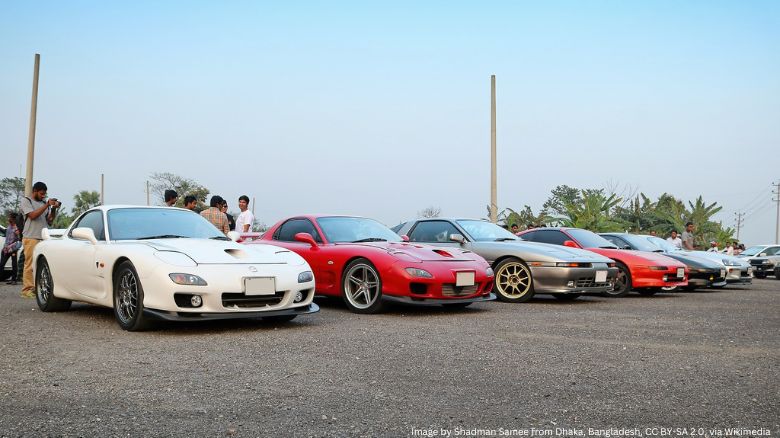
The RX-7’s success wasn’t limited to the showroom floor. It also made waves on racetracks around the world, earning accolades in various motorsports disciplines, including endurance racing and drifting.
These achievements helped solidify the RX-7’s reputation as a formidable performance car and cemented its place in the pantheon of iconic Japanese sports cars.
As the RX-7’s legend grew, it inspired a new generation of car enthusiasts who reveled in the car’s unique character and performance capabilities.
Its influence can still be felt today, as it remains a touchstone for those who value driver engagement, innovative engineering, and timeless design. In the annals of automotive history, the Mazda RX-7’s role in the rise of Japanese sports cars will forever be celebrated and revered.
The RX-7’s Three Generations: Evolution of a Legend
The First Generation (SA22C/FB): The Birth of an Icon
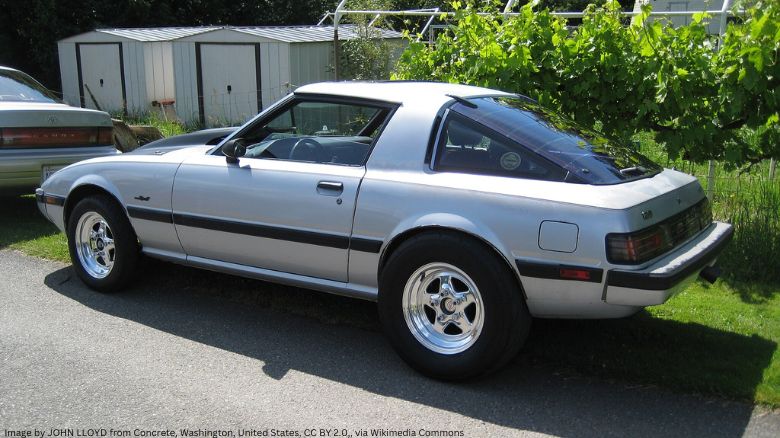
The Mazda RX-7’s story begins in 1978 with the launch of the first generation, known as the SA22C or FB. Born from a desire to create a lightweight, affordable sports car with a unique twist, the RX-7 was an instant hit among driving enthusiasts and critics alike.
The first generation RX-7’s sleek, aerodynamic design, combined with its innovative Wankel rotary engine, made it an immediate standout in the automotive world.
The SA22C/FB model’s distinctive “pop-up” headlights and smooth, flowing lines captured the hearts of car enthusiasts, while its lightweight construction and near-perfect weight distribution ensured a thrilling driving experience.
The RX-7’s winning formula of style, performance, and affordability was a breath of fresh air in a market dominated by pricier European and American sports cars.
This first iteration of the RX-7 laid the groundwork for what would become a legendary lineage of rotary-powered sports cars. It showcased Mazda’s commitment to pushing the boundaries of automotive engineering and design, setting the stage for the evolution of an icon.
As the automotive world took notice of this remarkable newcomer, it became evident that the Mazda RX-7 was destined for greatness.
The Second Generation (FC): Refinement and the Quest for Perfection
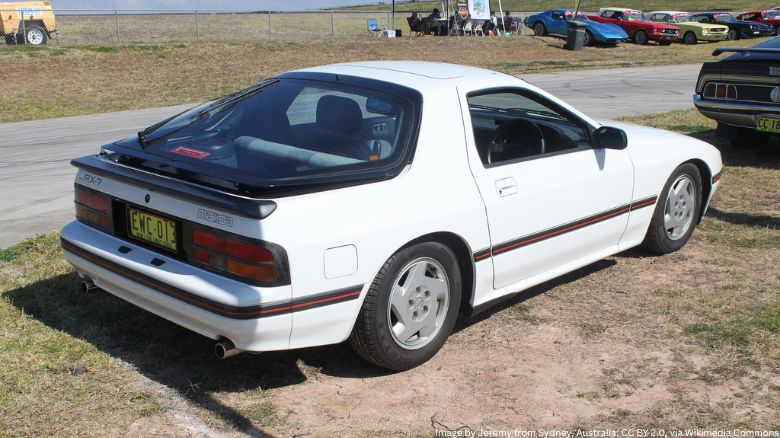
In 1985, Mazda unveiled the second generation of the RX-7, the FC model. Building upon the success and adoration of the first generation, Mazda’s engineers embarked on a quest for perfection, refining and evolving the RX-7’s already impressive attributes.
The FC retained the core principles of its predecessor, with the Wankel rotary engine remaining the beating heart of the car.
However, Mazda introduced significant enhancements to the powerplant, including the addition of a turbocharger in some models, boosting power and performance to new heights.
Aesthetically, the second generation RX-7 showcased a more mature design, with softened lines and a more rounded shape. The result was a car that looked more sophisticated and purposeful, reflecting the advances in engineering and technology that lay beneath its skin.
Mazda didn’t stop with the engine and exterior; they also focused on improving the RX-7’s handling and ride quality. The FC featured updated suspension and steering systems, which further refined the car’s already impressive agility and responsiveness.
The second generation RX-7 successfully built upon the foundation laid by the original, elevating the car’s performance, design, and reputation to new levels.
The FC solidified the RX-7’s status as a true sports car icon and demonstrated Mazda’s unwavering commitment to the pursuit of automotive excellence.
The Third Generation (FD): The Pinnacle of Rotary-Powered Engineering
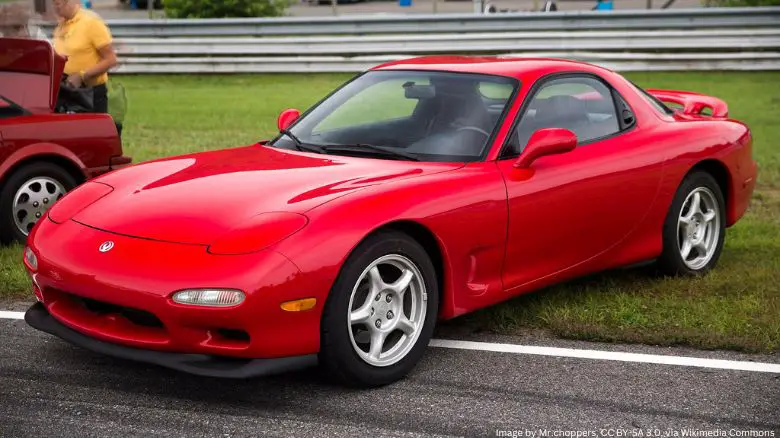
The third and final generation of the Mazda RX-7, the FD, debuted in 1992, representing the apex of rotary-powered engineering.
With its breathtaking design and unparalleled performance, the FD RX-7 not only captured the essence of its predecessors but also elevated the RX-7 name to legendary status.
The FD’s sleek, curvaceous bodywork was the epitome of 1990s automotive design, exuding a sense of speed and grace even when standing still.
The car’s low-slung profile and muscular stance left no doubt about its performance capabilities, hinting at the mechanical marvels that lay under the hood.
At the heart of the FD RX-7 was an evolution of the Wankel rotary engine, now sporting twin-turbochargers for a remarkable increase in power and torque.
The 13B-REW engine, as it was known, provided the RX-7 with explosive acceleration and a unique, intoxicating exhaust note that has become synonymous with the car.
The FD’s handling was equally impressive, thanks to its advanced suspension system and lightweight construction. The car’s razor-sharp reflexes and telepathic steering made it a true driver’s machine, delivering an unparalleled level of connection and communication between car and driver.
The third generation RX-7 was the culmination of Mazda’s tireless pursuit of rotary-powered perfection. It remains a revered icon in the automotive world, a testament to the passion, innovation, and engineering prowess that defined the RX-7 lineage.
As the final chapter in the RX-7’s storied history, the FD stands as the ultimate expression of Mazda’s rotary-powered vision, a fitting tribute to a legendary sports car.
The RX-7’s Impact on the Tuner Culture
The RX-7 in the World of Modified Cars
The Mazda RX-7 has long held a special place in the hearts of car enthusiasts, and its impact on the tuner culture is nothing short of extraordinary.
With its unique rotary engine and exceptional handling, the RX-7 provided a perfect canvas for aftermarket modifications, allowing owners to transform their cars into high-performance machines that pushed the boundaries of automotive capability.
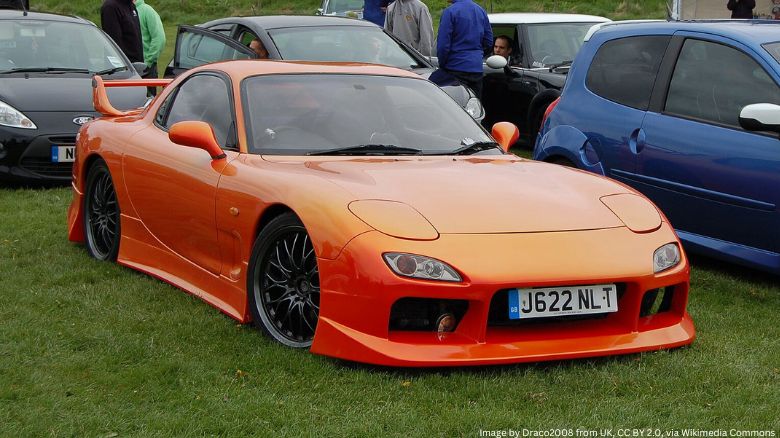
The world of modified cars embraced the RX-7 with open arms, drawn to the car’s inherent tunability and potential for jaw-dropping performance upgrades.
The RX-7’s rotary engine, in particular, became a popular platform for performance enhancements, with many tuners extracting staggering power figures from the compact powerplant.
This combination of high horsepower and lightweight construction led to some truly awe-inspiring builds, turning heads and setting records on tracks and streets around the world.
The RX-7’s influence on tuner culture extends beyond the realm of pure performance. The car’s stunning design and timeless appeal have made it a popular choice for aesthetic modifications, with owners adding their personal touch through body kits, custom paint jobs, and bespoke interiors.
This fusion of style and performance has made the RX-7 a mainstay of car shows and enthusiast gatherings, where it continues to captivate audiences with its unique blend of engineering and artistry.
In the realm of tuner culture, the Mazda RX-7 stands as a symbol of innovation, passion, and creativity. Its impact on the world of modified cars is undeniable, serving as an enduring testament to the power of human ingenuity and the relentless pursuit of automotive excellence.
The Role of the RX-7 in Popularizing Japanese Performance Cars
The Mazda RX-7 played a pivotal role in popularizing Japanese performance cars on the global stage, breaking down barriers and challenging the dominance of established European and American sports cars.
The RX-7 proved that Japan was capable of producing innovative, powerful, and stylish sports cars that could compete with the best in the world.
By the time the RX-7 arrived on the scene, Japanese automakers had already made significant inroads into the global market with reliable, fuel-efficient cars.
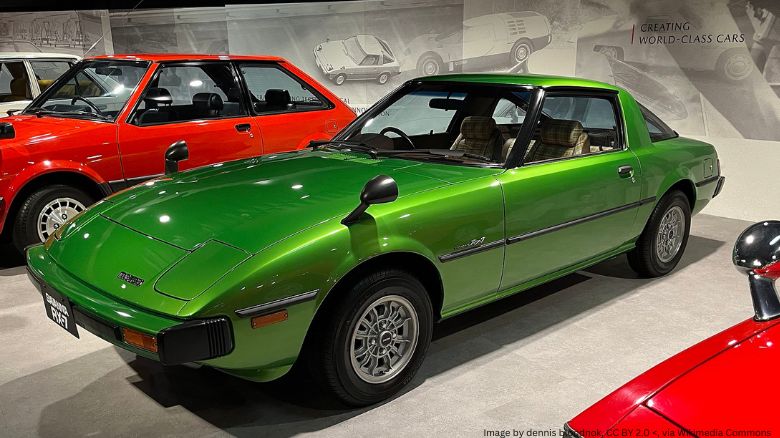
However, the RX-7, along with other iconic Japanese sports cars of the era, helped reshape the perception of Japanese cars, demonstrating that they could be exciting, performance-oriented, and desirable.
The RX-7’s success in motorsports, particularly in endurance racing and rallying, also played a significant role in raising the profile of Japanese performance cars.
Victories on the track helped to validate the car’s engineering prowess and cement its reputation as a serious contender in the world of high-performance automobiles.
The influence of the RX-7 on popular culture cannot be understated. The car made its mark in movies, television shows, and video games, becoming a cultural icon that introduced a new generation of car enthusiasts to the world of Japanese performance cars.
This exposure helped fuel the growth of the tuner culture and solidified the RX-7’s status as a beloved symbol of Japanese automotive innovation.
In the grand scheme of automotive history, the Mazda RX-7’s role in popularizing Japanese performance cars is both significant and enduring.
The car’s unique blend of performance, style, and innovation captured the hearts and minds of enthusiasts around the world, leaving an indelible mark on the industry and paving the way for the continued success of Japanese sports cars.
The RX-7 in Motorsports: Racing Success and Legacy
The Mazda RX-7’s storied history in motorsports is yet another testament to its prowess as a performance car.
With numerous victories across various racing disciplines, the RX-7 has etched its name in the annals of motorsports, leaving a legacy that has solidified its status as a true classic.
In the world of endurance racing, the RX-7 enjoyed a remarkable run of success, particularly in the demanding 24 Hours of Spa and the 24 Hours of Daytona.
The RX-7 proved to be a formidable competitor on the track, racking up victories and podium finishes that showcased the car’s reliability and performance capabilities.
The RX-7’s motorsports resume extends beyond endurance racing, as it also found success in the highly competitive world of rallying.
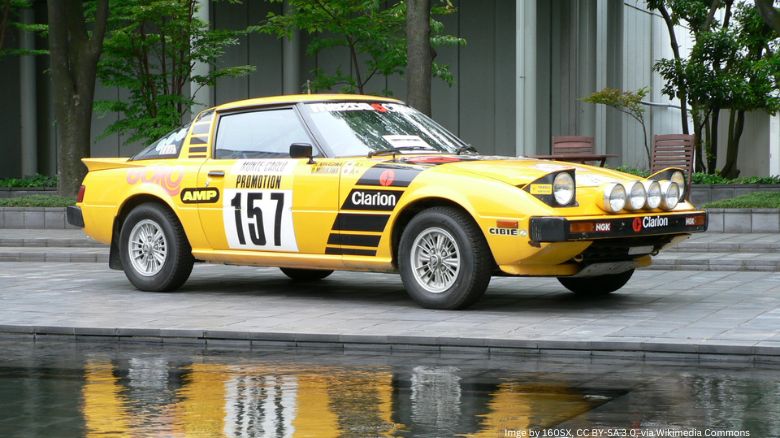
Competing against some of the most iconic rally cars of its time, the RX-7 held its own, taking home victories and earning the respect of both fans and competitors alike.
The car’s racing pedigree was further solidified in the realm of drifting, where its balanced chassis and rear-wheel-drive layout made it a popular choice among professional and amateur drifters.
The RX-7’s presence in the drifting scene has endured, and it remains a favorite among enthusiasts looking to push the limits of car control.
The Mazda RX-7’s success in motorsports has left an indelible mark on its legacy, contributing to its status as a classic sports car. The victories it achieved on the track are a testament to its performance capabilities and the engineering marvel that is the rotary engine.
RX-7’s Unique Traits: What Sets It Apart from Other Sports Cars
The Lightweight and Compact Nature of the Rotary Engine
The RX-7’s Wankel rotary engine is a marvel of engineering, delivering impressive power in a lightweight and compact package.
The compact nature of the rotary engine allows it to be placed lower and further back in the car’s chassis, providing the RX-7 with an ideal weight distribution for optimal handling.
This results in a sports car that boasts a nimble and responsive driving experience, making it a true driver’s car that rewards skill and finesse.
The lightweight characteristics of the rotary engine also contribute to the RX-7’s overall performance. With less weight to haul around, the car can accelerate faster, brake more efficiently, and maintain higher speeds through corners.
This lightweight design philosophy has always been at the heart of the RX-7’s appeal, setting it apart from other sports cars that often rely on brute force to achieve performance benchmarks.
The RX-7’s rotary engine may have its quirks and challenges, but its unique traits have become an enduring part of the car’s appeal.
Timeless Design and Aerodynamics
The Mazda RX-7’s enduring appeal can also be attributed to its timeless design, which gracefully blends form and function.
The car’s sleek, flowing lines and aggressive stance create an aesthetic that is both eye-catching and aerodynamically efficient, making it an elegant articulation of automotive design principles.
Throughout its three generations, the RX-7’s design evolved to meet the demands of the times while staying true to its core identity.
From the clean, simple lines of the first generation (SA22C/FB) to the muscular curves of the second generation (FC) and the refined aggression of the third generation (FD), the RX-7’s design has consistently struck a balance between beauty and performance.
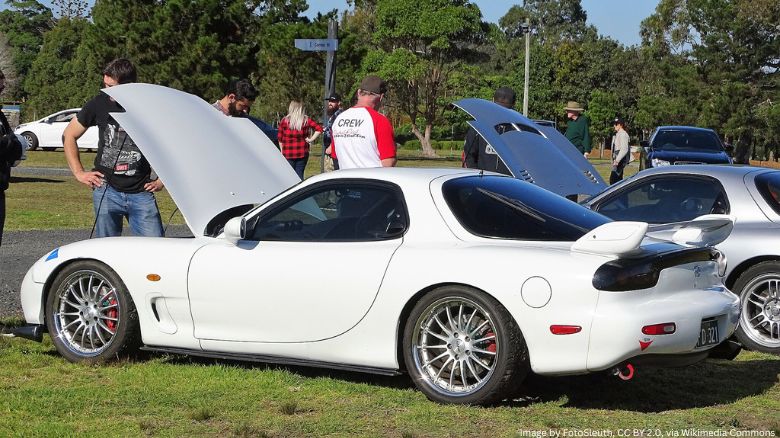
The car’s aerodynamics have also played a significant role in shaping its design. With a focus on minimizing drag and maximizing downforce, the RX-7’s bodywork has been carefully sculpted to optimize its performance on the road and track.
The result is a car that not only looks stunning but also delivers an exhilarating driving experience.
Its combination of form and function has resonated with enthusiasts for decades, making it a symbol of Japanese automotive design that remains captivating to this day.
The Cult Following and Dedicated Enthusiast Community
Another factor that sets the Mazda RX-7 apart from other sports cars and contributes to its status as a classic is its passionate cult following and dedicated enthusiast community.
The RX-7 has captured the hearts and minds of car lovers around the world, inspiring a level of devotion that is truly remarkable.
This dedicated community has become a vital part of the RX-7’s story, as enthusiasts have banded together to share knowledge, experiences, and a mutual love for this unique sports car.
From online forums and social media groups to local car clubs and track day events, the RX-7 community is a vibrant and welcoming space for anyone who shares a passion for rotary-powered performance.
This following has also played a crucial role in preserving the RX-7’s legacy. Through their collective efforts, enthusiasts have kept the RX-7 alive and relevant, ensuring that its unique attributes and storied history are not forgotten.
This passionate community has also been instrumental in maintaining and restoring these cars, ensuring that future generations can continue to appreciate and enjoy the RX-7’s distinctive charm.
The RX-7’s Place in the Market: Rarity and Value Appreciation
Production Numbers and Scarcity
One of the factors that contribute to the Mazda RX-7’s classic status and potential for value appreciation is its production numbers and relative scarcity.
Throughout its three generations, the RX-7 was produced in limited quantities compared to other sports cars of its era, making it a more exclusive and sought-after vehicle.
The first-generation (SA22C/FB) RX-7 saw the highest production numbers, with over 470,000 units built between 1978 and 1985. The second-generation (FC) RX-7, produced between 1985 and 1992, saw a significant drop in production, with approximately 270,000 units made.
The third and final generation (FD), which was in production from 1992 to 2002, had the lowest production numbers, with only around 68,000 units built.
Although not the rarest sports car ever built, the production numbers of the FD model have still contributed to the RX-7’s scarcity, particularly for the later models and special editions. As a result, enthusiasts and collectors have begun to recognize the RX-7’s potential as a valuable and appreciating classic.
With plenty having dropped out of the market over the years, the car’s relative rarity, coupled with its unique attributes and passionate following, has helped to drive demand and increase its market value.
With limited numbers of unmolested examples available and a dedicated enthusiast community, the RX-7 is poised to become an increasingly sought-after and valuable classic in the years to come.
The Rising Value of Well-Maintained Examples
The Mazda RX-7’s desirability and potential for value appreciation are further demonstrated by the rising market value of well-maintained examples, particularly for the sought-after third-generation (FD) models.
A look at the average prices of FD RX-7s over the last few years showcases a steady increase in value, highlighting the growing demand for this iconic sports car.
After a steady increase over a number of years, prices really started taking off in 2022.
The upward trend in the value of well-maintained FD RX-7s serves as strong evidence of the RX-7’s growing status as a classic and its potential to appreciate further in the coming years.
The rising desirability reflects the car’s increasing classic status. The RX-7 is a prime candidate for continued value appreciation, making it a compelling choice for collectors and sports car enthusiasts alike.
Comparing the RX-7 to Other Classic Japanese Sports Cars
When assessing the Mazda RX-7’s status as a classic and its potential for value appreciation, it is helpful to compare it to other classic Japanese sports cars that have experienced similar recognition and market growth.
This comparison allows us to gauge the RX-7’s standing within the realm of Japanese performance icons and better understand its potential trajectory.
One of the RX-7’s most notable contemporaries is the Toyota Supra, particularly the fourth-generation (A80) model. Like the RX-7, the Supra has experienced a surge in demand and value in recent years, thanks to its impressive performance, striking design, and starring role in popular culture.
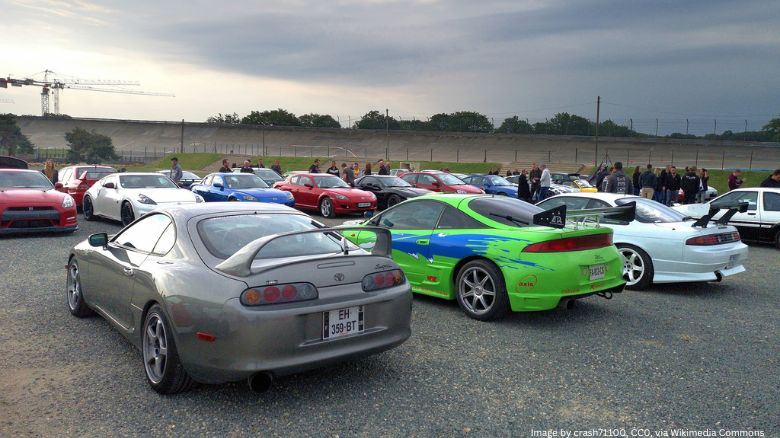
Both the RX-7 and Supra are revered for their handling capabilities and have developed a dedicated following among enthusiasts and collectors alike.
Another classic Japanese sports car to consider is the Nissan Skyline GT-R, specifically the R32, R33, and R34 generations. These high-performance machines have become highly sought-after, with collectors and enthusiasts drawn to their unique combination of power, handling, and advanced technology.
The Skyline GT-R’s legendary status has led to a significant increase in value, much like the RX-7 and Supra.
Comparing the Mazda RX-7 to other classic Japanese sports cars like the Toyota Supra and Nissan Skyline GT-R reveals a pattern of rising demand and value for these performance icons.
As appreciation for these vehicles grows, it seems likely that the RX-7 will continue to follow a similar trajectory.
Challenges of Owning an RX-7
The Rotary Engine’s Reputation for Reliability
The Mazda RX-7’s unique rotary engine offers numerous advantages, including its reputation for reliability when it’s looked after and maintained correctly.
But the Wankel rotary engine, though innovative and lightweight, is not without its challenges.
It has been known to suffer from certain problems when not cared for, that can make ownership a mixed experience for some. Here is a list of the top issues that RX-7 owners should be aware of:
- Apex seal wear: One of the most common issues with rotary engines is the wear of apex seals, which can result in reduced performance and even engine failure if not addressed.
- Premature engine failure: Due to the engine’s high operating temperatures and unique design, some RX-7s have experienced premature engine failure, often requiring a complete rebuild or replacement.
- Fuel and oil consumption: Rotary engines are notorious for their relatively high fuel and oil consumption, making the RX-7 somewhat less economical to run than other sports cars.
- Cooling system issues: The rotary engine’s high operating temperatures can put a strain on the cooling system, potentially leading to overheating or other cooling-related problems.
- Vacuum leaks: The complex system of vacuum lines in the RX-7 can be prone to leaks, which can lead to performance issues and engine damage if not promptly addressed.
While these issues can be daunting for prospective RX-7 owners, it is important to note that many of these problems can be managed or even mitigated with proper maintenance and care.
By staying on top of preventative measures and promptly addressing any concerns, owning an RX-7 can still be a rewarding experience, despite the challenges associated with its rotary engine.
Maintenance and Running Costs
When considering the RX-7 as a classic, it is essential to take into account the maintenance and running costs associated with owning this unique sports car.
While the rotary engine offers a distinctive driving experience, it also comes with its own set of challenges in terms of upkeep and expenses.
Routine maintenance is critical to keeping an RX-7 in good working order. Regular oil changes, using the proper type of oil, and keeping an eye on coolant levels are essential for managing the rotary engine’s high operating temperatures.
In addition, owners should pay close attention to spark plugs and ignition coils, as these components can wear more quickly in rotary engines than in traditional piston engines.
Due to the potential for apex seal wear, owners should also budget for a possible engine rebuild or replacement, as this can be a costly repair.
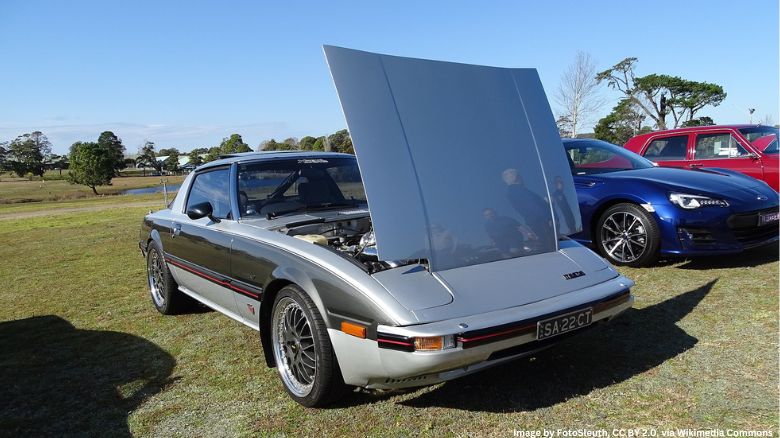
However, some aftermarket options, like improved apex seals and other upgraded components, can help extend the life of the engine and reduce the likelihood of such issues.
Fuel consumption is another factor to consider when owning an RX-7. The rotary engine is known for its relatively high fuel consumption, which can be a downside for some owners.
That said, enthusiasts often find the driving experience provided by the RX-7 to be worth the additional fuel costs.
Finally, insurance and registration costs should be taken into account, as these can vary depending on factors such as location and driving history.
In some cases, classic car insurance may be available for the RX-7, potentially offering lower premiums and other benefits tailored to the needs of classic car owners.
While the maintenance and running costs of the RX-7 can be higher than those of some other sports cars, a well-maintained example can still provide a rewarding ownership experience.
For many enthusiasts, the unique driving dynamics and distinctive appeal of the RX-7 make it well worth the investment.
Balancing Performance with Practicality
When it comes to owning a classic sports car like the Mazda RX-7, striking a balance between performance and practicality is often a key consideration.
The RX-7 is renowned for its exceptional handling, lightweight design, and distinctive rotary engine, all of which contribute to its performance prowess. However, it is also important to evaluate the car’s practicality for daily use or longer road trips.
The RX-7’s compact design and two-seat configuration may limit its practicality for some potential owners, especially those who require more cargo space or seating for passengers.
While it is not designed as a family car or cargo hauler, the RX-7 can still offer a reasonable amount of storage space for a sports car, particularly in the hatchback models.
As previously mentioned, the rotary engine’s fuel consumption may be a concern for some, particularly for those who plan to use the RX-7 as a daily driver.
However, its lightweight design and nimble handling can make it a pleasure to drive on winding roads or during spirited outings, potentially offsetting any concerns about fuel efficiency.
Additionally, the RX-7’s suspension and ride quality are generally praised for their balance of performance and comfort.
While it is undoubtedly a sports car, the RX-7 can still provide a relatively comfortable ride for longer journeys or daily commuting, especially when compared to other high-performance vehicles of its era.
When it comes to balancing performance with practicality, the Mazda RX-7 might not be the perfect fit for everyone. However, for those who appreciate its unique characteristics and are willing to embrace the challenges associated with its rotary engine, the RX-7 can provide a rewarding ownership experience that blends driving excitement with a reasonable level of practicality.
The Car Investor’s View
Weighing the Factors that Contribute to the RX-7’s Classic Status
In concluding our exploration of the Mazda RX-7 as a potential classic, it is important to consider the various factors that contribute to its status.
The RX-7’s unique and innovative Wankel rotary engine, its role in the rise of Japanese sports cars, and its impact on the tuner culture are all significant aspects that underscore the car’s importance in automotive history.
Its timeless design, exceptional handling, and distinctive driving experience have helped it to stand out from other sports cars of its era.
Its cult following and dedicated enthusiast community also demonstrate the lasting appeal of the RX-7, as well as its potential to endure as a classic car in the years to come.
On the other hand, the maintenance and running costs associated with owning one can be seen as potential drawbacks.
However, for enthusiasts who are willing to invest in proper care and upkeep, these challenges can be managed and may even serve to enhance the car’s allure.
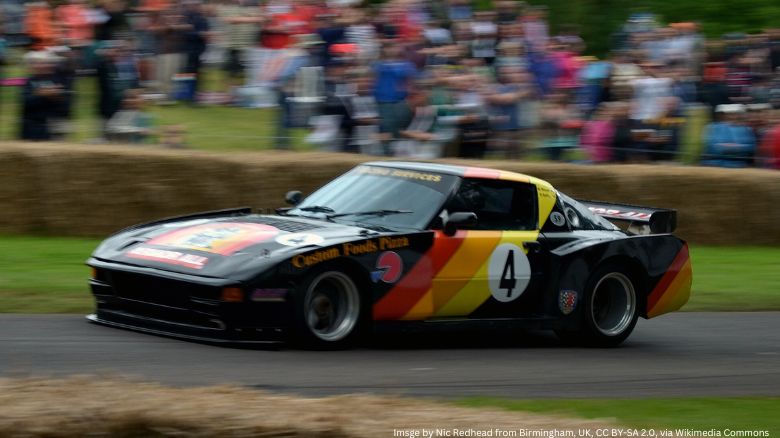
While it may not be the perfect fit for every enthusiast, the RX-7’s unique characteristics, rich history, and undeniable charm make it a strong contender for classic status.
The Role of Time in Determining the RX-7’s Place in Automotive History
Time plays a significant role in shaping our perception of a car’s place in automotive history. As the years go by, the impact of a vehicle’s innovation, design, and performance can be evaluated more clearly, allowing us to recognize its true significance and potential for classic status.
In the case of the Mazda RX-7, time has allowed us to appreciate its pioneering use of the Wankel rotary engine, as well as its contribution to the rise of Japanese sports cars on the global stage.
With each passing year, the RX-7’s groundbreaking design and engineering achievements become more apparent, solidifying its place in automotive history. It also paved the way for another potential future classic, the Mazda RX-8, which was launched in the early 2000s.
Time has also given rise to a devoted community of RX-7 enthusiasts who are dedicated to preserving and celebrating the car’s legacy.
This enduring passion for the RX-7 not only reinforces its potential as a classic but also ensures that future generations will continue to appreciate its unique appeal.
As we move further away from the RX-7’s production years, the car’s rarity and desirability are likely to increase, further cementing its classic status.
Time has already demonstrated the RX-7’s lasting impact on automotive culture, and as the years continue to pass, its significance in the annals of automotive history will only become more pronounced.
The Ongoing Debate Over the Mazda RX-7 as a Classic
Despite the concerns we’ve mentioned, the RX-7’s unique appeal, rich history, and undeniable charm cannot be denied. With time, the car’s rarity and desirability have only increased, and its dedicated enthusiast community continues to grow.
In light of the RX-7’s numerous strengths and its potential to endure as a classic car, we give it a “Future Classic Rating” of 4.5 out of 5.
While no car is without its flaws, the Mazda RX-7’s unique characteristics and enduring appeal make it a strong contender for true classic status, ensuring its place in automotive history for years to come.
The Car Investor’s Future Classic Rating: 3.8 / 5
ABOUT THE AUTHOR
Adam Chinn writes about the intersecting worlds of classic cars, driving pleasure, and smart investment strategies. Starting his journey at 26, he’s proven that one doesn’t need to be wealthy to begin investing in classic cars.
Adam’s insights have been recognized on platforms such as MoneyInc, Swagger Magazine, and Top Speed.
Your journey to smarter car investments starts here.
The latest classic car data analysis, news, and expert articles delivered straight to your inbox.
- Take the guesswork out of classic car investing
- Get the tools and strategies you need to take action
- Learn the market inside-out
- Make informed decisions with confidence
Register now to see the best and worst performers, every month
You can unsubscribe at any time

